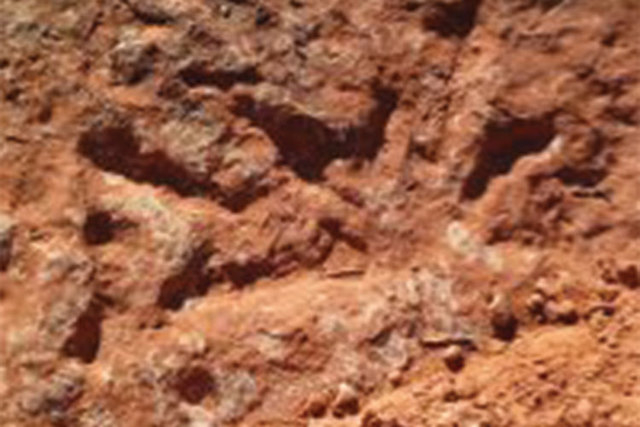Utah’s Red Cliffs area a wonderland for outdoors enthusiasts

Red Cliffs Recreation Area near St. George, Utah, is a scenic gem just off busy Interstate 15 along pretty Quail Creek. Open year-round, the Bureau of Land Management site offers picnicking, camping, and trails for hikers, mountain bikers and horse riders. Nearby points of interest include a pioneer farmstead, a mining ghost town, an Anasazi ruin, dinosaur tracks and two popular state parks.
To reach Red Cliffs Recreation Area, drive north from Las Vegas 120 miles to St. George. A short detour at the Bluff Street exit provides access to a wealth of information at the BLM’s St. George Field Office at 345 E. Riverside Drive. Continue on the freeway through St. George to exit 22 near the pioneer-era town of Leeds. Turn right and follow the paved frontage road south 2 miles. The road turns west to go beneath the freeway through two tunnels. Follow signs a short distance to Red Cliffs.
The access road takes you near the site of old Harrisburg, a frontier Mormon farming village abandoned in the 1890s because of floods, insect invasions and Navajo raids. Harrisburg is in ruins except for the sturdy home built in the 1860s by Orson Adams. Now stabilized and restored, the sandstone structure is frequently open for docent-led tours. The farmstead acreage is preserved as an American historical landscape with vintage orchards and pastures fenced with stone.
Increased visitation is causing traffic and parking problems at the old farm and at Red Cliffs, sometimes resulting in visitors being turned away at peak times. Plan to visit on weekdays if possible and avoid visiting on holiday weekends. Early arrival ensures a wider choice of parking spaces as well as the best site selection for picnics or camping. Facilities include vault toilets and centrally located drinking water. All picnic and campsites have tables, grills and fire pits. Bring firewood.
Access to Red Cliffs is limited to vehicles less than 12 feet high because of the tunnels. Day-use visitors towing trailers must park at the White Reef Trailhead, reached by turning right after the second tunnel. When visitors reach Red Cliffs, they find just 56 parking spaces in the day-use area. The 11-site camping area provides parking only for campers’ vehicles, RVs or trailers. There are no hookups. Visitors pay a $5 entrance fee and campers pay $15 per night for campsites.
The BLM site is part of the large desert reserve set aside as Red Cliffs National Conservation Area. It contains lively streams that create places of lush beauty and help shape the land. The streams carve canyons in the sandstone and lay bare distinctive formations and ledges called reefs. Visitors may use a network of 17 trails to reach vantage points with extraordinary views and to explore more of this desert wonderland.
When visitors follow the half-mile walk to Red Cliffs Archaeological Site, they learn about the Virgin Anasazi, who utilized the creek water to raise crops and built stacked stone dwellings over many years but then disappeared. The Silver Reef Trail takes visitors to dinosaur tracks laid down in the Jurassic period. Prospectors would later discover unusual deposits of silver in the sandstone of Silver Reef, leaving behind a ghost town of the same name. The 6-mile Red Reef Trail takes visitors into beautiful Cottonwood Canyon and its adjacent wilderness area.
The water from Quail Creek is impounded in a nearby canyon to form a fishing and boating reservoir in Quail Creek State Park. Overflow from Quail Creek heading for the Virgin River fills another reservoir at nearby Sand Hollow State Park, a favorite for fishing, boating and access to miles of red sand dunes, beloved by four-wheel and off-road enthusiasts. Both of these parks are accessed from state Route 9 through Hurricane toward Zion National Park.
Margo Bartlett Pesek’s column appears on Sundays.